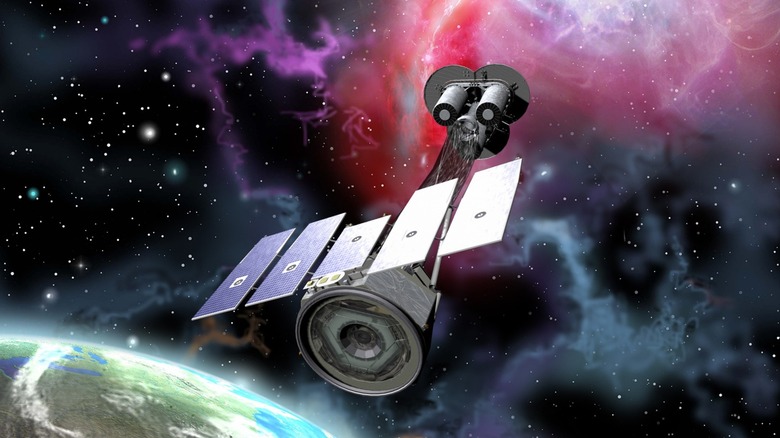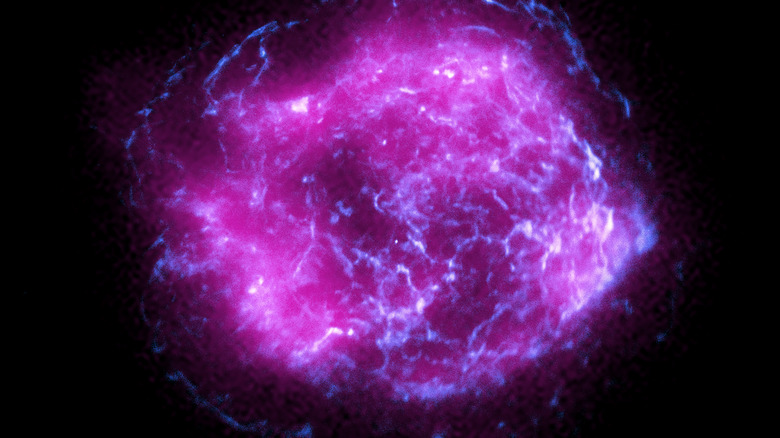NASA's New X-Ray Observatory Has Captured Its First Image
NASA has a new tool for observing the universe in the X-ray wavelength called the Imaging X-Ray Polarimetry Explorer, or IXPE for short. Launched in December 2021, IXPE now sits in an orbit around the Earth 370 miles (600 kilometers) above the surface, and it began collecting science data in January 2022. NASA has now released the first image IXPE captured, and it's a stunning portrait of a supernova remnant called Cassiopeia A.
A supernova remnant is a structure of gas which is left over when a star reaches the end of its life and explodes in an epic event called a supernova. This particular remnant is from a star which exploded in the 17th century, sending shockwaves out into gas which is heated up and glows in the X-ray wavelength.
NASA already had an X-Ray observatory called the Chandra X-ray Observatory, launched in 1999, but given the 20+ years it'd been in space, it became time for IXPE to help supplement its research. Chandra's first image was also of Cassiopeia A, so it's a suitable target for IXPE to image for its inauguration. The image shown below (supernova remnant Cassiopeia A) is a combination of both the new data collected by IXPE, shown in magenta, and older data collected by Chandra, shown in blue.
"The IXPE image of Cassiopeia A is as historic as the Chandra image of the same supernova remnant," said Martin C. Weisskopf, the IXPE principal investigator based at NASA's Marshall Space Flight Center in Huntsville, Alabama in a statement. "It demonstrates IXPE's potential to gain new, never-before-seen information about Cassiopeia A, which is under analysis right now."
Polarization of X-rays
The IXPE mission will focus on a particular measurement of X-rays called polarization. This refers to the direction the X-rays are vibrating in, which can help to understand complex phenomena like neutron stars or black holes. In fact, as Chandra revealed, there is a neutron star at the heart of Cassiopeia A, left over from when the star which formed the remnant went supernova.
By looking at the polarization of the X-rays from Cassiopeia A, researchers hope to learn more about how these X-rays are produced.
"IXPE's future polarization images should unveil the mechanisms at the heart of this famous cosmic accelerator," said Roger Romani, an IXPE co-investigator at Stanford University (via NASA). "To fill in some of those details, we've developed a way to make IXPE's measurements even more precise using machine learning techniques. We're looking forward to what we'll find as we analyze all the data."

